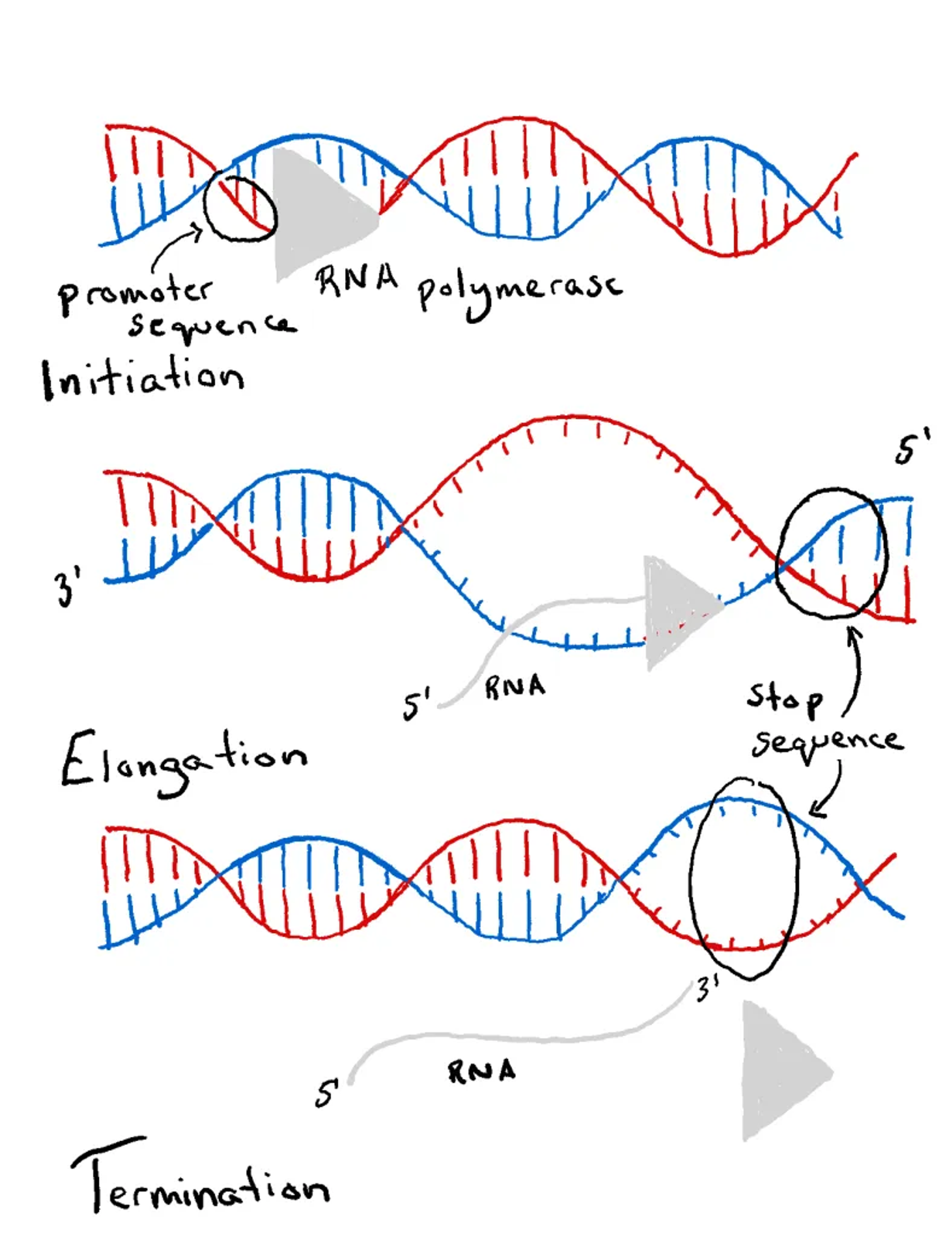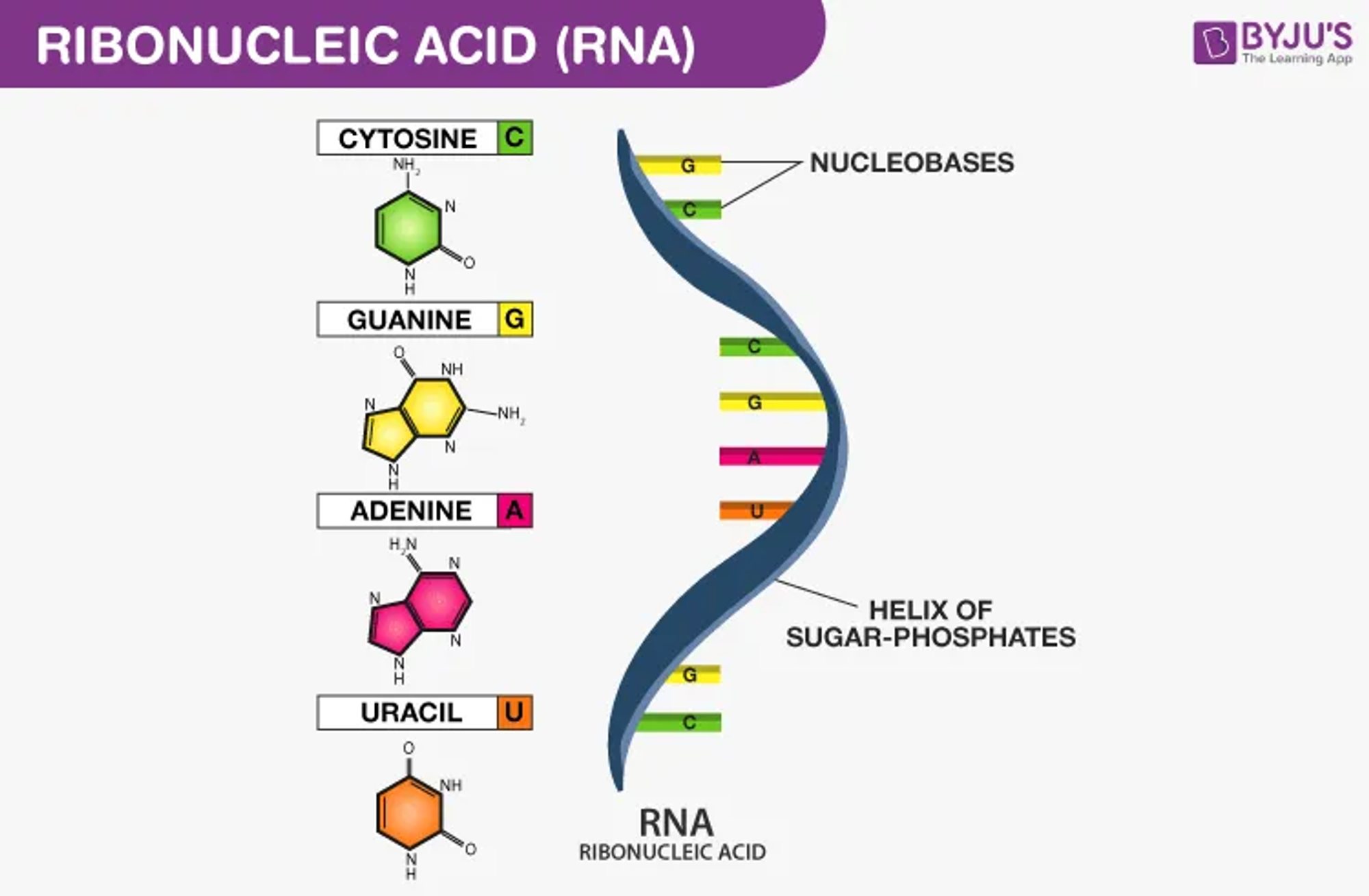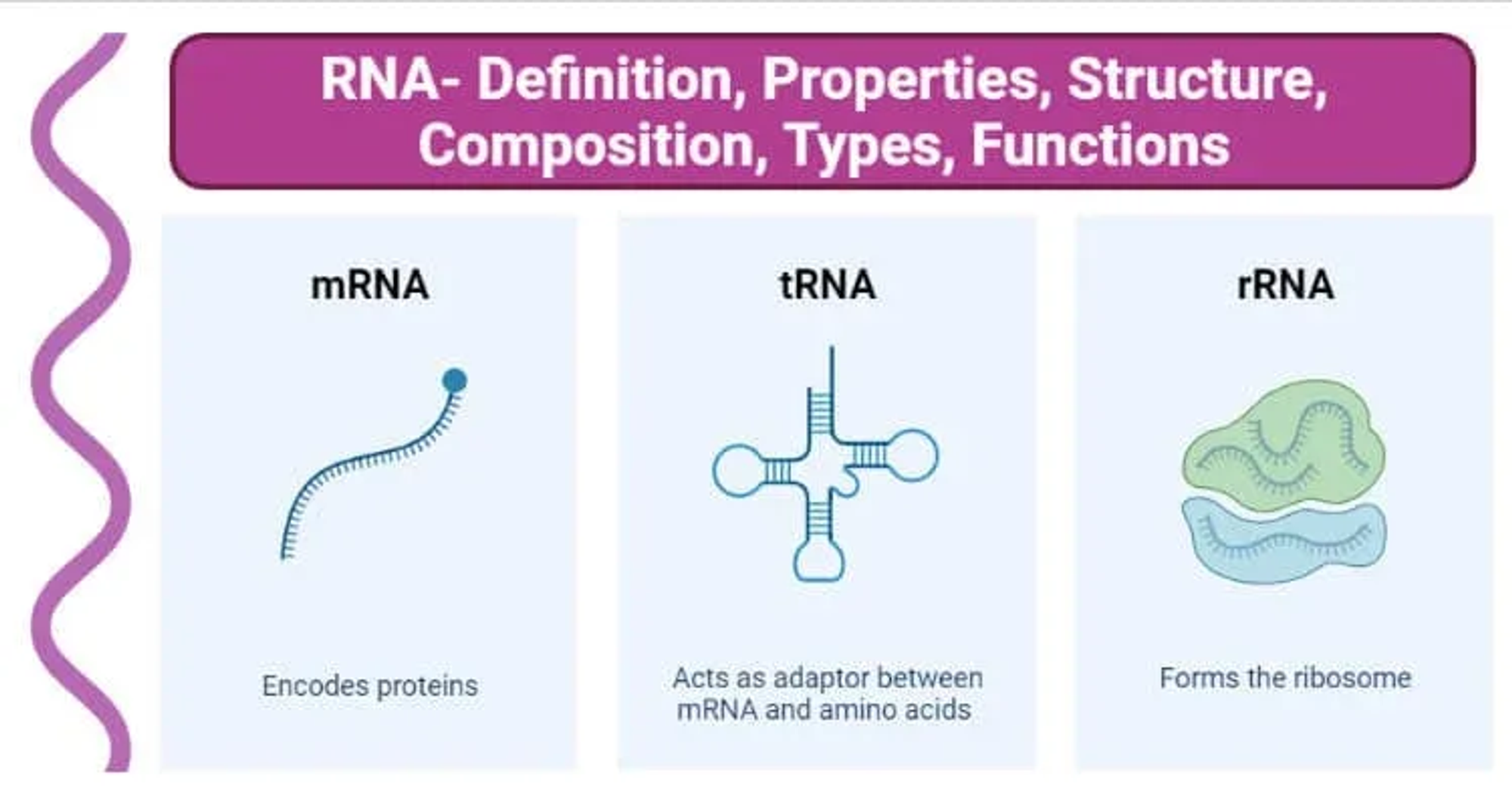Tuesday, September 24, 2024
DNA, RNA, and Proteins: Structure and Function


Introduction
DNA, RNA, and proteins are fundamental molecules that play critical roles in the biology of all living organisms. DNA serves as the blueprint for life, encoding the genetic instructions necessary for growth, development, and reproduction. RNA acts as an intermediary between DNA and proteins, which are the functional molecules that perform a wide range of tasks in cells. This article delves into the chemical composition and structure of DNA, RNA, and proteins, as well as their key functions, including DNA replication, RNA transcription, translation, gene regulation, and the role of epigenetics in gene expression. Understanding these molecular processes is essential for comprehending how genetic information is stored, transmitted, and expressed within living organisms.
Chemical Composition of DNA
DNA (deoxyribonucleic acid) is a vital molecule that encodes the genetic blueprint for life, responsible for directing the growth, development, and reproduction of all living organisms. It consists of two complementary strands that form a double helix, each composed of nucleotides arranged in a specific sequence. These nucleotides are the basic building blocks of DNA.
Each nucleotide is composed of three key components:
- Phosphate Group: A phosphorus atom bonded to four oxygen atoms, providing DNA with its acidic properties and contributing to the structural framework by linking adjacent nucleotides.
- Deoxyribose Sugar: A five-carbon sugar molecule that forms part of the backbone of DNA. It differs from ribose (found in RNA) by lacking one oxygen atom, making DNA more stable.
- Nitrogenous Bases: Four distinct bases — adenine (A), thymine (T), cytosine ©, and guanine (G) — which encode genetic information. These bases pair in specific ways: adenine pairs with thymine (A-T) through two hydrogen bonds, while cytosine pairs with guanine (C-G) through three hydrogen bonds.
The DNA strands are anti-parallel, meaning they run in opposite directions, and are held together by the hydrogen bonds between the nitrogenous bases, forming the iconic double helix structure. This arrangement is crucial for the accurate replication and transmission of genetic information.

DNA Replication
DNA replication is a critical process that ensures each cell receives an exact copy of the genetic material before cell division. It follows a semi-conservative model, meaning that each of the two resulting DNA molecules consists of one original strand and one newly synthesized strand.
Steps of DNA Replication:
- Initiation: Replication begins at specific locations known as origins of replication. Helicase, an enzyme, unwinds the double helix, separating the two strands to create a replication fork. Single-strand binding proteins (SSBs) stabilize the unwound DNA, preventing the strands from reannealing.
- Elongation: DNA polymerase adds complementary nucleotides to each original strand. The new DNA strands are synthesized in the 5' to 3' direction. The leading strand is synthesized continuously because it is oriented in the 5' to 3' direction towards the replication fork. On the other hand, the lagging strand, oriented in the opposite direction, is synthesized discontinuously, forming short fragments called Okazaki fragments. These fragments are synthesized away from the replication fork.
- Termination: DNA replication concludes when the entire DNA molecule has been replicated. Okazaki fragments on the lagging strand are joined together by the enzyme DNA ligase, forming a continuous strand.
- Proofreading: DNA polymerases possess proofreading abilities, ensuring high fidelity during replication. They detect and correct mismatched nucleotides, reducing the error rate to approximately one mistake per billion base pairs.

Functions of DNA
DNA serves as the foundation of life, performing several critical functions that ensure the continuity and proper functioning of organisms:
- Genetic Information Storage: DNA holds the complete set of instructions necessary for the development, functioning, and reproduction of living organisms. It encodes the information required for the synthesis of proteins, which are the building blocks and functional molecules in cells.
- Transmission of Genetic Information: DNA ensures the inheritance of traits from parents to offspring. During sexual reproduction, DNA is passed through gametes (sperm and egg) during meiosis and fertilization, ensuring that each generation receives genetic material from both parents.
- Protein Synthesis: DNA plays a central role in protein synthesis, involving two key steps:-
Transcription: The process where DNA is transcribed into messenger RNA (mRNA), which carries genetic instructions from the nucleus to the ribosome.
Translation: At the ribosome, mRNA is translated into a specific sequence of amino acids, forming a protein. - Regulation of Cellular Activities: DNA regulates gene expression, controlling when, where, and how much of a gene’s product (protein or RNA) is made. This regulation is vital for cellular functions, growth, and adaptation to environmental changes.
RNA: Structure and Function
RNA (ribonucleic acid) is a nucleic acid similar to DNA, but it plays a distinct role in various biological processes, particularly in protein synthesis. While DNA stores genetic information, RNA translates and transfers this information to support cellular functions.
Components of RNA:
- Ribose Sugar: RNA contains ribose, a five-carbon sugar that differs from the deoxyribose found in DNA. Ribose has an additional hydroxyl (-OH) group attached to the 2' carbon, making RNA more reactive and less stable than DNA.
- Phosphate Group: Like DNA, RNA has a backbone composed of alternating phosphate groups and ribose sugars. The phosphate group contributes to RNA’s structural integrity by linking nucleotides through phosphodiester bonds.
- Nitrogenous Bases: RNA contains four nitrogenous bases: adenine (A), cytosine ©, guanine (G), and uracil (U), which replaces thymine (T) found in DNA. Uracil pairs with adenine (A-U) in RNA, while cytosine pairs with guanine (C-G).
RNA usually exists as a single strand rather than the double-helix structure of DNA. Its structure allows it to fold into various shapes, enabling it to perform functions such as carrying genetic messages (mRNA), forming the core of ribosomes (rRNA), or transferring amino acids during protein synthesis (tRNA). These differences allow RNA to be versatile in its roles in the cell.

Types of RNA:
There are three main types of RNA, each with a distinct role in protein synthesis:
- mRNA (Messenger RNA): Carries the genetic instructions from DNA to ribosomes, where proteins are synthesized. It acts as a template for assembling amino acids in the correct order.
- tRNA (Transfer RNA): Transports specific amino acids to the ribosome, matching its anticodon with the mRNA codon to ensure correct amino acid sequence during protein synthesis.
- rRNA (Ribosomal RNA): Combines with proteins to form ribosomes, the cellular machinery responsible for translating mRNA into functional proteins.

Types of RNA and their functions
RNA Synthesis (Transcription)
RNA synthesis, or transcription, is the process by which an RNA molecule is produced from a DNA template, enabling the transfer of genetic information from DNA to RNA.
Stages of Transcription:
- Initiation: Transcription begins when RNA polymerase binds to a specific region of DNA known as the promoter. This region is upstream of the gene to be transcribed. The binding of RNA polymerase to the promoter causes the DNA double helix to unwind and separate, creating a single-stranded template for RNA synthesis.
- Elongation: During elongation, RNA polymerase moves along the DNA template strand in the 3' to 5' direction, synthesizing the RNA strand in the 5' to 3' direction. It adds ribonucleotides that are complementary to the DNA template strand, forming a growing RNA chain.
- Termination: Transcription concludes when RNA polymerase encounters a terminator sequence in the DNA. This sequence signals the end of the gene, causing RNA polymerase to detach from the DNA and release the newly synthesized RNA transcript.
Post-transcriptional Modifications:
- 5' Capping: A 7-methylguanylate cap is added to the 5' end of the RNA transcript, protecting it from degradation and assisting in translation.
- 3' Polyadenylation: A poly-A tail is added to the 3' end of the RNA, enhancing stability and export from the nucleus.
- Splicing: Introns (non-coding regions) are removed from the RNA transcript, and exons (coding regions) are joined together, producing a mature messenger RNA (mRNA) ready for translation.


Translation
Translation is a crucial biological process where the genetic code in mRNA is decoded to produce a polypeptide chain, which will fold into a functional protein. This process occurs in the cytoplasm and involves several key stages:
- Initiation: Translation begins when the small ribosomal subunit binds to the mRNA molecule at the start codon, typically AUG, which codes for methionine. The initiator tRNA, carrying methionine, binds to this start codon, and the large ribosomal subunit then assembles with the small subunit to form the complete ribosome.
- Elongation: During elongation, tRNA molecules transport specific amino acids to the ribosome according to the mRNA sequence. Each tRNA has an anticodon that pairs with the mRNA codon. As the ribosome moves along the mRNA, amino acids are linked together by peptide bonds, forming a growing polypeptide chain. This process occurs in the ribosome’s A (aminoacyl), P (peptidyl), and E (exit) sites, where tRNA binds, transfers, and exits respectively.
- Termination: Translation ends when the ribosome encounters a stop codon on the mRNA (UAA, UAG, or UGA). This signals the end of the polypeptide chain synthesis. The completed polypeptide is then released from the ribosome, which disassembles and the mRNA is available for further translation or degradation.

Key Players in Translation:
- Ribosomes: These molecular machines facilitate the translation of mRNA into a polypeptide chain. They consist of two subunits (large and small) that come together on the mRNA to perform protein synthesis.
- tRNA (Transfer RNA): tRNA molecules carry specific amino acids to the ribosome. Each tRNA has an anticodon that matches complementary mRNA codons, ensuring the correct amino acid is added to the growing polypeptide chain.
- mRNA (Messenger RNA): mRNA conveys the genetic code from DNA in the nucleus to the ribosome in the cytoplasm. It provides the template that dictates the sequence of amino acids in the resulting protein.
Gene Regulation and Expression
Gene regulation is crucial for controlling the timing, location, and amount of gene expression, ensuring that proteins are produced when needed and in appropriate quantities. This regulation varies between prokaryotes and eukaryotes.
Prokaryotes: Gene regulation often occurs through operons, clusters of genes with related functions controlled by a single promoter and operator. The lac operon, for example, regulates genes involved in lactose metabolism in response to lactose availability.
Eukaryotes: Gene regulation is more complex and involves multiple layers:
- Chromatin Remodeling: DNA is wrapped around histones to form chromatin. Chemical modifications of histones and DNA, such as acetylation and methylation, affect chromatin structure and gene accessibility.
- Transcriptional Regulation: Transcription factors bind to specific DNA sequences to activate or repress transcription. Enhancers and silencers are regulatory elements that influence the binding of these factors.
- Post-transcriptional Regulation: After transcription, RNA can be modified through splicing, editing, and degradation. Alternative splicing allows for multiple protein products from a single gene.
- Translational Regulation: The efficiency of translation can be regulated by factors that interact with mRNA and ribosomes, impacting protein synthesis.
- Post-translational Regulation: Proteins undergo modifications such as phosphorylation, glycosylation, and ubiquitination, which affect their activity, stability, and localization.

Epigenetics
Epigenetics involves changes in gene expression without altering the DNA sequence:
- DNA Methylation: Methyl groups are added to cytosine bases in DNA, typically leading to gene silencing by preventing transcription factors from binding or altering chromatin structure.
- Histone Modification: Chemical modifications (e.g., acetylation, methylation) to histone proteins affect the compactness of chromatin. Acetylation generally promotes gene expression by loosening chromatin, while methylation can either activate or repress gene expression depending on the specific context.
- Non-coding RNAs: These RNA molecules, including microRNAs and long non-coding RNAs, regulate gene expression by interacting with mRNA, leading to degradation or inhibition of translation, or by modulating chromatin structure.
